Original URL: https://www.theregister.com/2009/04/27/review_graphics_nvidia_geforce_gtx_275/
Zotac GeForce GTX 275 AMP! Edition
Factory-overclocked for extra grunt
Posted in Channel, 27th April 2009 12:02 GMT
Review Nvidia launched its GeForce GTX 275 on the same day that AMD delivered the ATI Radeon HD 4890 but it has taken us a while to get our mitts on this factory-overclocked Zotac GeForce GTX 275 AMP! Edition.
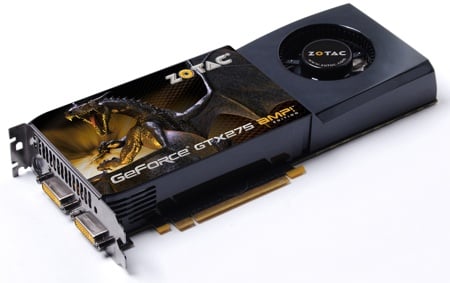
Zotac's GeForce GTX 275 AMP! Edition: ready to take on the Radeon 4890?
AMD had the Radeon HD 4890 available at launch, but Nvidia was a touch slower off the mark with the GTX 275, which fuelled rumours that Nvidia had brought the launch of the GTX 275 forward to spoil the release of the HD 4890.
As the name suggests, the GTX 275 is a close relation of the GTX 285 and uses the same 55nm fabrication process. The GTX 275 and 285 share the same count of 240 unified shaders. However, they have different memory and controller specifications. The GTX 285 has a 512-bit controller and 1GB of GDDR 3 memory, but the GTX 275 had to make do with a 448-bit controller and 896MB of GDDR 3.
Feeds and speeds are quite similar for the GTX 275 and GTX 285 with a core speed of 630MHz and 650MHz, respectively; memory that runs at an effective speed of 2200MHz and 2400MHz; and the unified shaders are clocked at 1400MHz and 1500MHz. It’s difficult to be more precise as the reference speeds are only a starting point for production graphics cards and factory-overclocked models. The restricted memory controller and reduced amount of memory suggests that GTX 275 should be ten per cent slower than GTX 285 while the increased clock speeds give the GTX 285 a further ten per cent lift in performance.
Outwardly, the GTX 275 looks very similar to both the GTX 285 and the junior GTX 260 as all three models measure 265mm in length and have an enveloping shroud over the heatsink with an angled fan at the end. Each graphics card uses a pair of six-pin power connectors to top up the juice supplied by the PCI Express bus. The older, 65nm GTX 280 used one six-pin and one-eight-pin connector, by contrast.
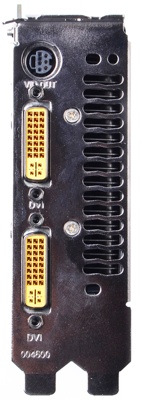
Takes up two slots
A basic GTX 275 is clocked at 632MHz/2268MHz/1404MHz and can be bought for as little as £199, although Zotac sells its basic GTX 275 for £229. The overclocked AMP! Edition is priced at £253 and is clocked at an eye-watering 702MHz/2520MHz/1512MHz. That range of prices pitches the GTX 275 squarely against the Radeon HD 4890, which starts at £199 for a basic model clocked at 850MHz/3900MHz while a faster 900MHz/400MHz model costs £239.
Naturally we were keen to see how the overclocked Zotac GTX 275 AMP! compared with the Radeon HD 4890 but we also wanted to see how the new GTX 275 sits within the Nvidia range. Unfortunately, we don’t have a GTX 285 any longer, but we do have a GTX 280 and were also able to grab a GTX 260 from Asus.
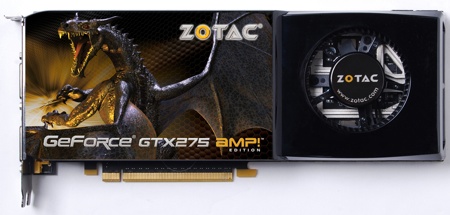
Nvidia's standard enclosure on one side...
All GTX 260s are not made equal as Nvidia uses the model code to cover parts fabricated with the old 65nm process and also with the latest 55nm technology. We had access to a Zotac GeForce GTX 260 AMP! which has a 65nm chip as well as an Asus ENGTX260 Matrix which has a 55nm GPU. The two versions of GTX 260 overclocked to the same figures of 680MHz/2400MHz/1466MHz. However, the Asus ran considerably cooler than the Zotac. No doubt the later chip fabrication process plays its part but the major factor is the two enormous fans that Asus employs.
GPU Temperature Results
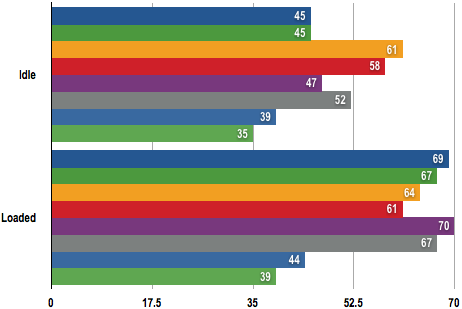
Temperature in Degrees Celcius (°C)

We ran the Zotac GTX 275 AMP!, reference HD 4890, reference GTX 280 and Asus GTX 260 on an Intel DX58SO motherboard with a Core i7 965 Extreme processor and 3GB DDR 3 memory. We used 32-bit Windows Vista Ultimate Edition with Catalyst 9.4 drivers for the HD 4890 and GeForce 185.68 for the three Nvidia cards, and ran 3DMark Vantage, Crysis and Far Cry 2 to see how they performed.
In 3DMark Vantage's CPU tests, the Nvidia cards score significantly higher than the HD 4890 due to the way that the Nvidia PhysX drivers shift the physics workload from the CPU to the GPU. We suggest that you take the CPU and Overall scores with a pinch of salt and instead focus on the GPU test numbers.
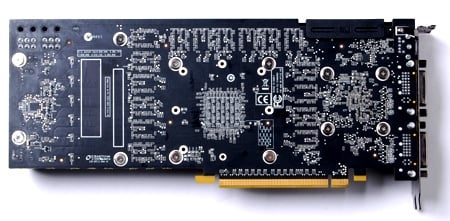
...and not much to distinguish the GTX 275 round the back, either
The Asus GTX 260 sets an impressive baseline in all the tests which is just as well as £180 is a fairly hefty chunk of cash. Overclocking from 576MHz/2000MHz/1242MHz to 680MHz/2450MHz/1466MHz raises performance by 20 per cent yet it barely affects the temperature of the GPU or the power draw.
In 3DMark Vantage, our GTX 280 scored ten per cent better than the GTX 260 but in Crysis and Far Cry 2 the difference is a trivial two frames per second, which seems like a poor return for an extra £100. We tested at 1920 x 1080 which is a screen resolution that is appropriate for most gamers unless you have a colossal 30in TFT.
3DMark Vantage Results
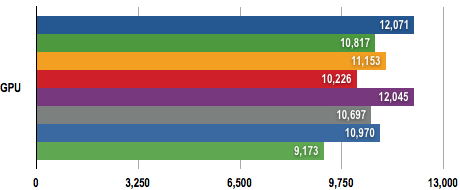
Longer bars are better
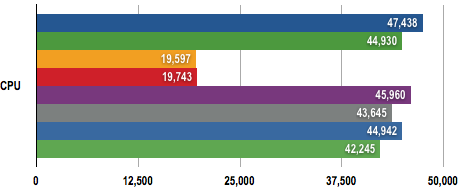
Longer bars are better
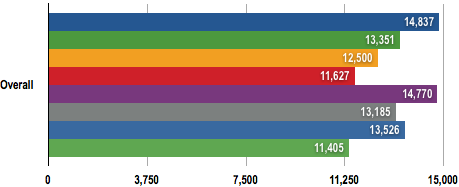
Longer bars are better

Crysis Results
1920 x 1080
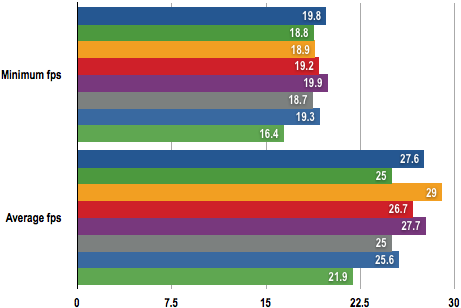
Longer bars are better

Far Cry 2 Results
1920 x 1080, No AA
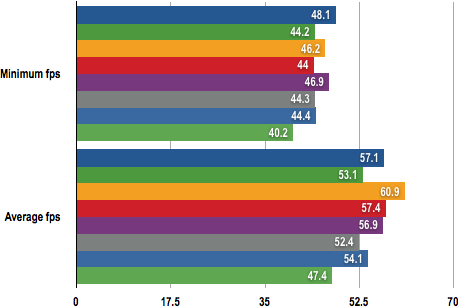
Longer bars are better
1920 x 1080, 2x AA
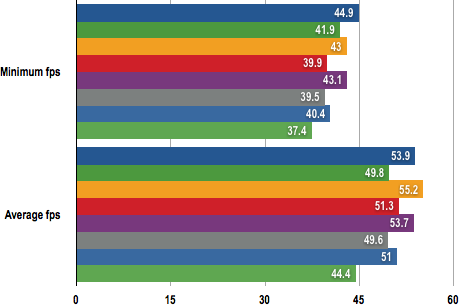
Longer bars are better

CPU-Z Readouts
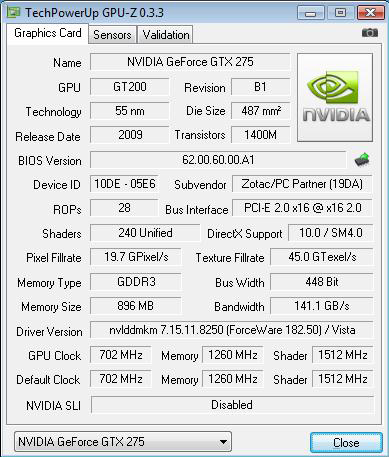
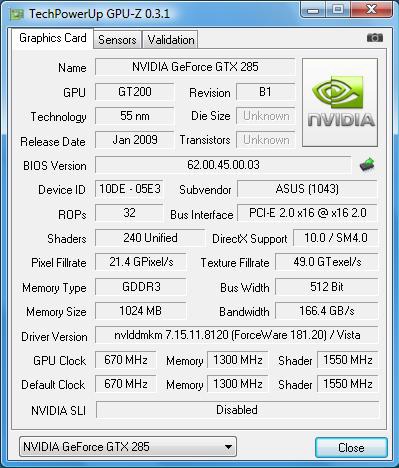
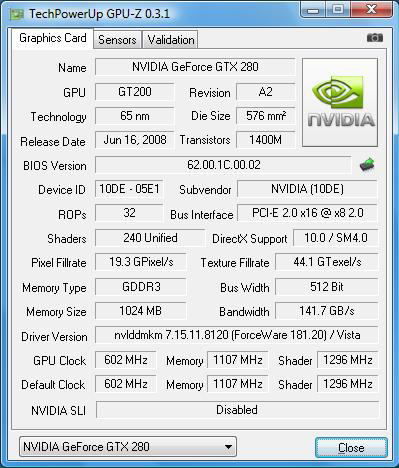
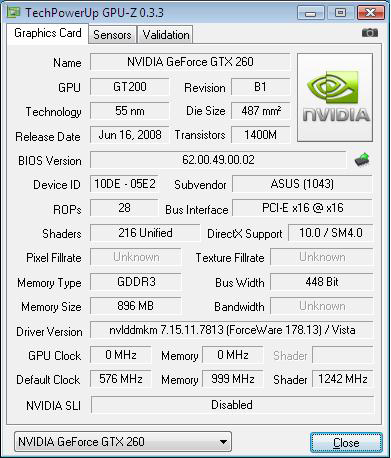
Switching to the Zotac GTX 275 AMP! was intriguing. We started by underclocking to the reference GTX 275 speeds of 632MHz/2268MHz/1404MHz and found that the Zotac produced results that were almost identical to the GTX 280. At overclocked AMP! speeds of 702MHz/2520MHz/1512MHz, the Zotac matched the overclocked GTX 280. We were unable to take the Zotac to higher speeds as it seems that the AMP! leaves the factory overclocked to the limit.
Power Draw Results
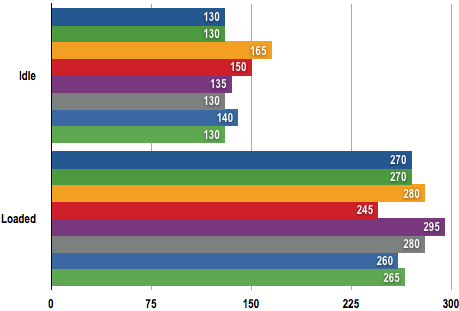
Power draw in Watts (W)

So how did the Radeon HD 4890 match up? On factory overclocked speeds of 900MHz/3900MHz the Radeon lost out to the reference GTX 275 in 3D Mark Vantage and matched it in Crysis and Far Cry 2.
Increasing the clock speeds to 970MHz/4400MHz produced some intriguing results from the Radeon HD 4890 compared to the Zotac AMP! GTX 275. In Crysis and Far Cry 2, the HD 4890 yielded a lower minimum frame rate but posted faster average frame rates. No matter how you cut it, the HD 4890 and GTX 275 are very similar indeed which pays tribute to Nvidia’s ability to dice and slice the GT200 chip to produce new products.
Verdict
Zotac’s overclocked Nvidia GeForce GTX 275 delivers all the performance you need for Full HD gaming. However, so does AMD's ATI Radeon HD 4890 and also offers slightly better value for money. ®
More Graphics Card Reviews...

Sapphire Vapor-X HD 4850 |

AMD ATI Radeon HD 4890 |

HIS HD 4870 IceQ 4+ Turbo |

Gigabyte passively cooled Radeon 4850 |